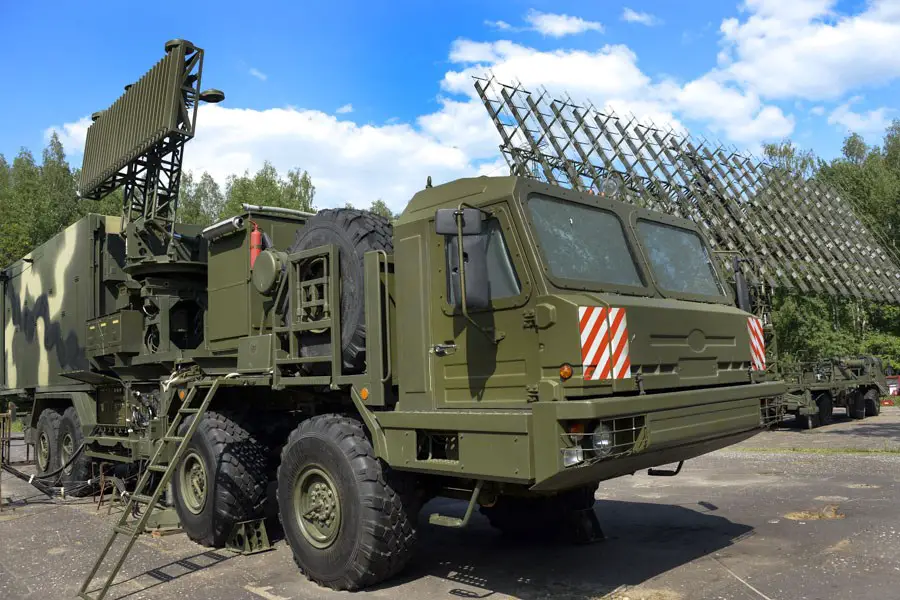The 55Zh6M Nebo-M is a new development based upon the Nebo family of Very High Frequency (VHF) 2D and 3D mobile air surveillance radars featuring Active Electronically Scanned Array (AESA) technology. Besides, the Nebo-M includes the radars operating in the L-band and X-band. Its development started in 2008 and by October 2011 the system demonstrated some sort of functionality but initial operational capability was not achieved until February 2015.
Air and hypersonic targets are detected at 600 km which is twice above the range of previous generations. Stealth technologies pose no problem for the new radars. The Nebo-M consists of three trucks carrying a giant, swimming-pool-sized antenna, a smaller one, and a command post module. Together they scan airspace at a range of 1,800 km and an altitude of 1,200 km. The Nebo-M takes just 15 minutes to deploy and its mobility enables positioning in any required direction. It also has strong jamming protection and works even if its radar systems get knocked out.

The Nebo-M is far more complex that previous Nebo radars, being considered an entirely new system, featuring multiple radar systems to automatically detect determine the coordinates and track airborne targets such as rotary- and fixed-wing aircraft, ballistic missiles, stealth aircraft, unmanned aerial vehicles and hypersonic cruise missiles. The Nebo-M radar systems have been designed to operate in complex jamming and heavy clutter environment thanks to the use of multiple bands and rotating antennas.
The main mission is to detect and track massive cruise missile strikes, as well as aircraft which try to break through the air defense at low altitude. The radar reliably operates in passive and active jamming. It was designed for interaction with the latest air defense and can provide guidance to S-400. Fundament-M is carried by one vehicle in contrast to predecessors. It analyzes information from various radars and produces a single real-time picture of the airspace.














